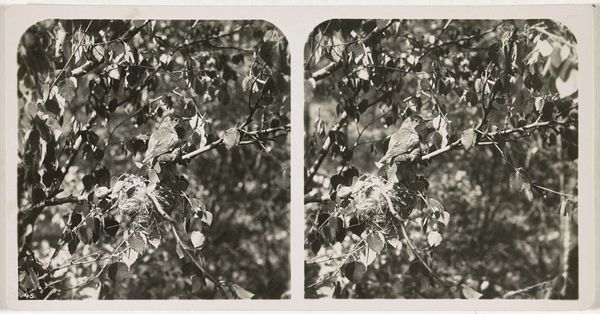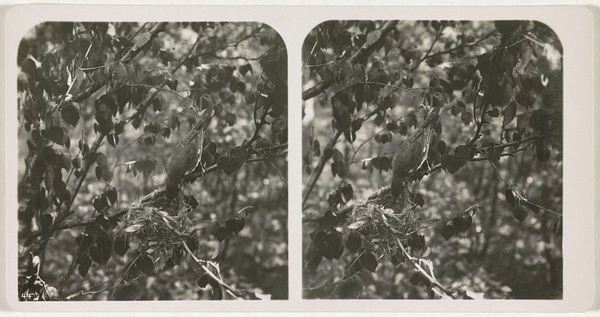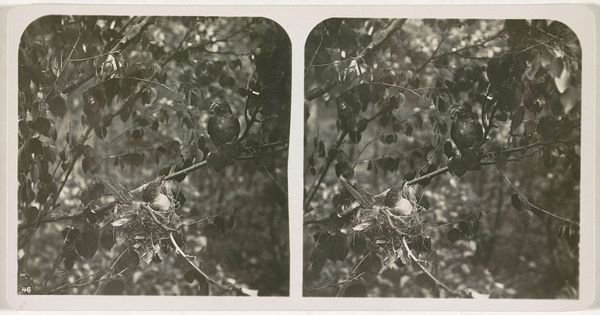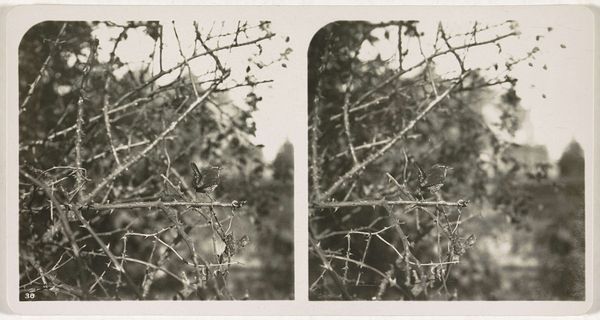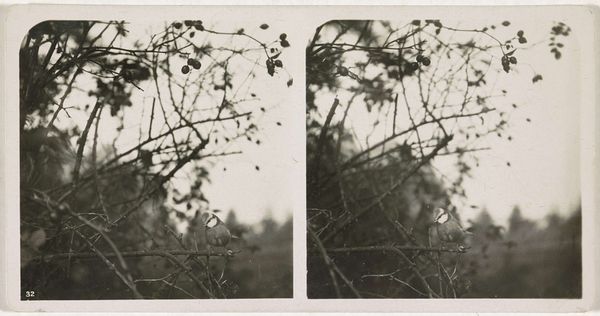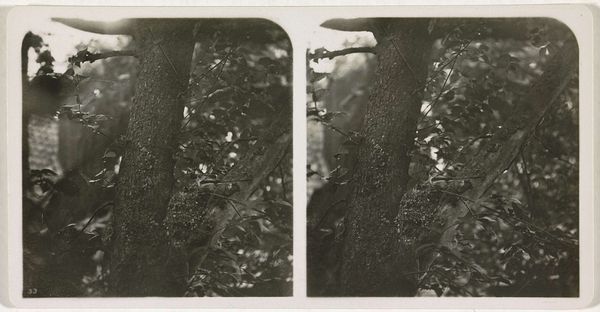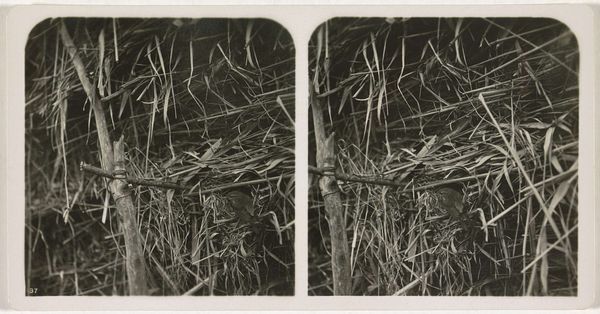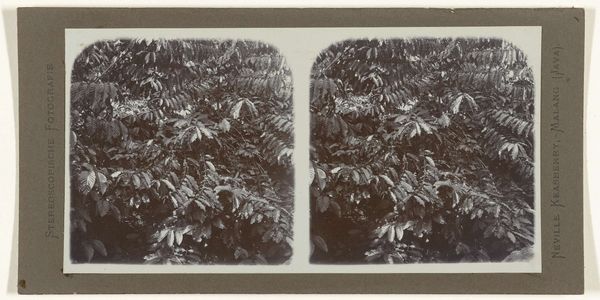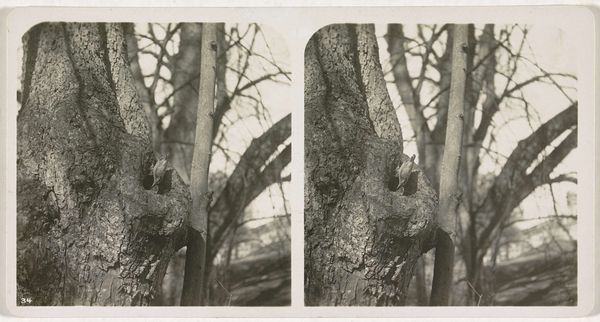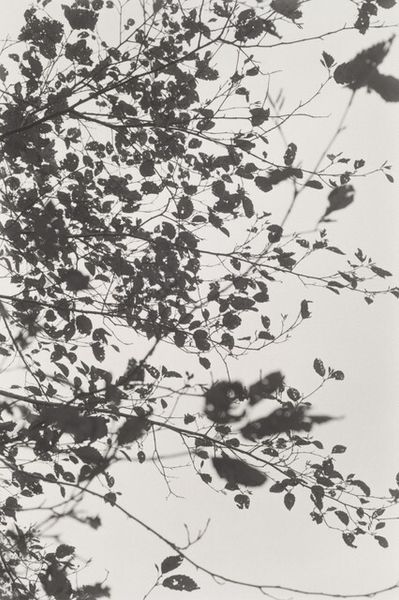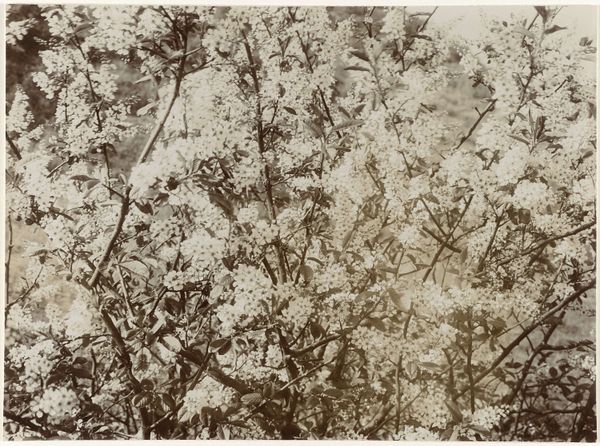
print, photography, gelatin-silver-print
#
still-life-photography
# print
#
landscape
#
charcoal drawing
#
photography
#
gelatin-silver-print
#
natural texture
#
naturalism
#
realism
Dimensions: height 85 mm, width 165 mm
Copyright: Rijks Museum: Open Domain
Curator: This gelatin silver print, entitled "Wielewaal zittend op nest in boom," depicts an oriole sitting on its nest in a tree. The photograph, by Adolphe Burdet, is estimated to have been created between 1870 and 1940. Editor: It’s remarkable. The detail captured in this black and white image evokes a surprising feeling of stillness, even with the bird nestled amongst all of those delicate leaves. You can almost feel the weight of its body on the branches. Curator: It certainly has an intimate quality. Bird nests often appear as powerful symbols of home, security, and familial love across many cultures. The meticulous care taken in building these fragile structures speaks volumes about the nurturing instincts deeply embedded in nature, and how those reflect human desires. Editor: Yes, and that vulnerability interests me too. There’s something particularly poignant about the photograph being presented as a double image; almost like a before-and-after of this fragile ecosystem. I'm wondering about the social context in which this image was produced. During this period, was there perhaps growing anxiety surrounding urbanization, industrialization and humanity's growing impact on the natural world? Curator: I believe you're onto something. This type of image offered viewers the prospect of encountering and perhaps controlling nature, without ever really intervening with it. Photographs, especially those in print, provided a certain illusion of dominance and understanding of the natural world. It was about bringing that imagery of nature and ideas of 'landscape' to the burgeoning cities, mediating an experience that many could no longer have directly. Editor: It makes one think about what the circulation of images like these, then and now, contributes to ideas of conservation and our complex relationships with animals and nature, too. Curator: Indeed. And perhaps, by offering such glimpses, this photographic tradition encourages a deeper contemplation on our place within nature. Editor: Food for thought. Curator: Precisely. It’s a potent, multi-layered composition.
Comments
No comments
Be the first to comment and join the conversation on the ultimate creative platform.
